How I Shot Viral Photos of the Aurora Over Dutch Windmills
![]()
Last Friday I was able to take photos I only thought were only possible in my dreams. As a professional landscape photographer, I have seen my fair share of beautiful northern lights in the Arctic, but I’ve always dreamed of seeing a strong aurora display in the Netherlands.
I have always wanted to photograph bright northern lights way above iconic Dutch windmills. Yes, people who know me know I have a thing for windmills. I have photographed them from every possible angle. Countless mornings with beautiful morning fog, the Neowise comet in 2020, the Milky Way rising above them, and of course capturing them every year as a backdrop for the Dutch tulips.
Last year, February 23, There was an extremely strong aurora display as well that reached the Netherlands. I was lucky enough to capture that as well on the North Coast of the country. Up until last weekend, that was my most spectacular aurora photo from the Netherlands.
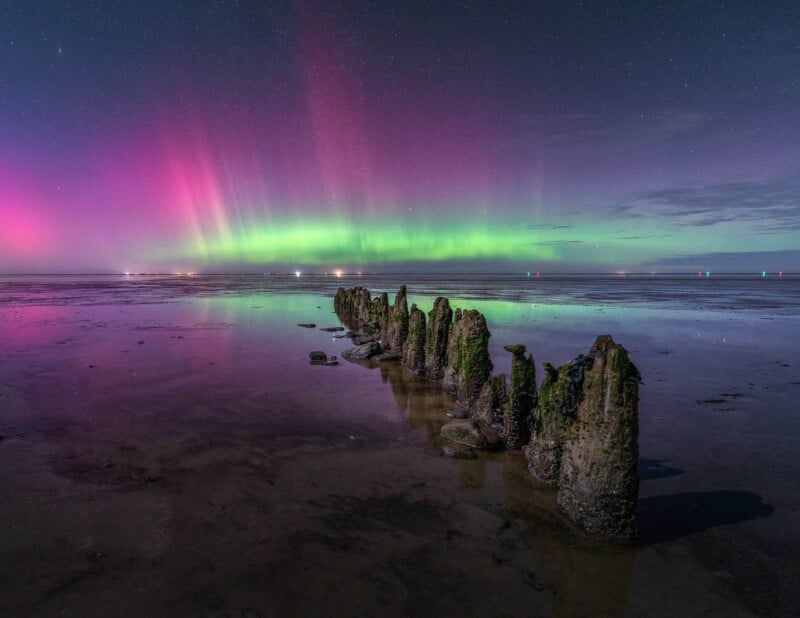
But that all changed since last Friday night. Earlier that week there were already very optimistic forecasts with high KP values predicted for the days that followed. But I didn’t get too excited yet. These forecasts are often not super accurate, meaning that the activity can be less, at the wrong time, or most often in the Netherlands: clouds that block the skies. It was only up until the day itself, Friday the 10th, that I was getting more excited.
The forecast now showed massive KP values from CMEs that were about to hit Earth. KP8 was predicted with a G3 or G4 geomagnetic storm, which is massive. This is quite rare and doesn’t happen often. And then there was the cloud forecast, which was quite optimistic for a change. Yes, high clouds were showing, but from experience up north I knew that if the aurora was strong, high clouds are not that much of a problem. I was hoping to capture something like February 23, or maybe even better with a bit of luck. But nothing prepared me for what was coming.
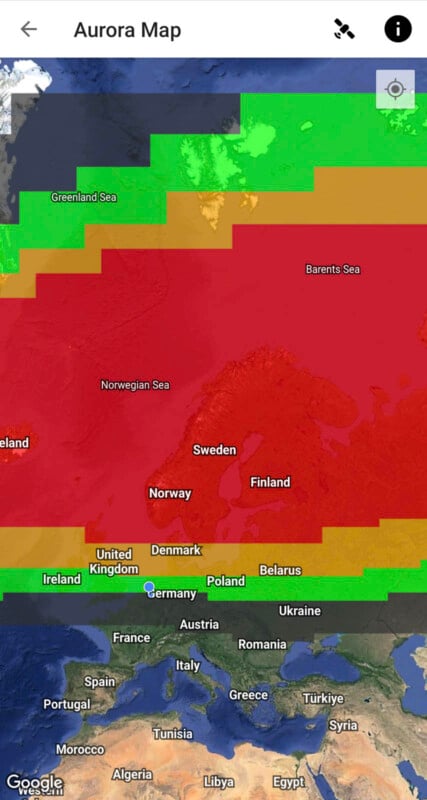
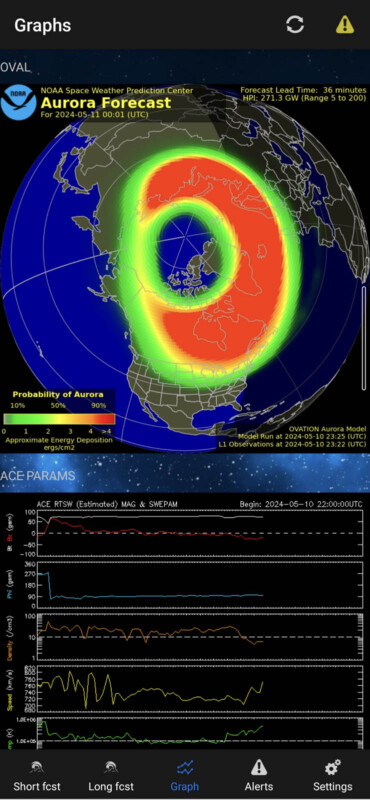
That Friday the KP values skyrocketed during the early evening already. It was still bright outside but KP values were showing KP8 with an aurora oval I had never seen in my life. The bright red part stretched almost until all of Europe, which is absolutely insane. The earth was being ‘attacked’ by this extremely strong geomagnetic storm. These were values that were almost never seen before.
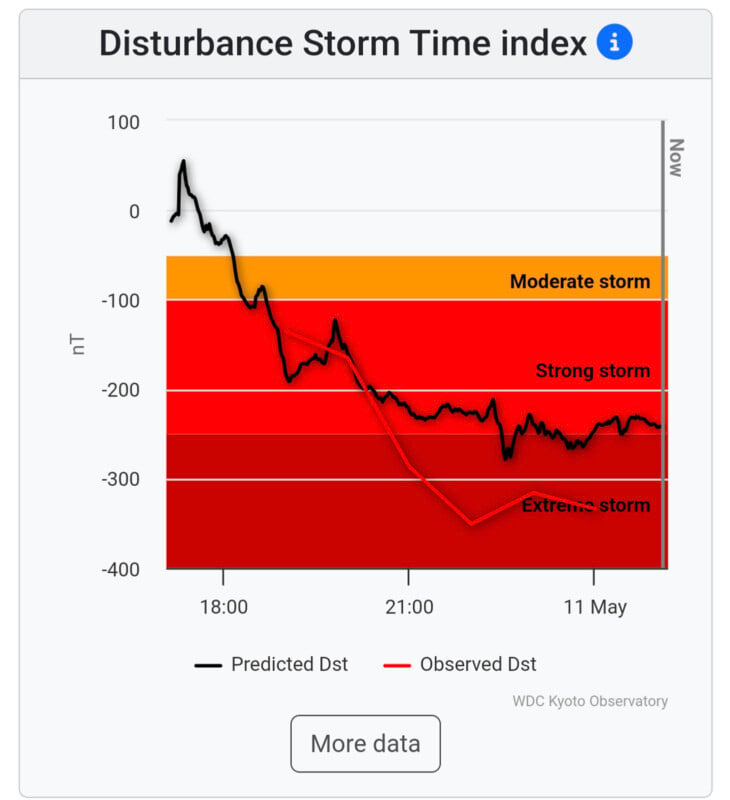
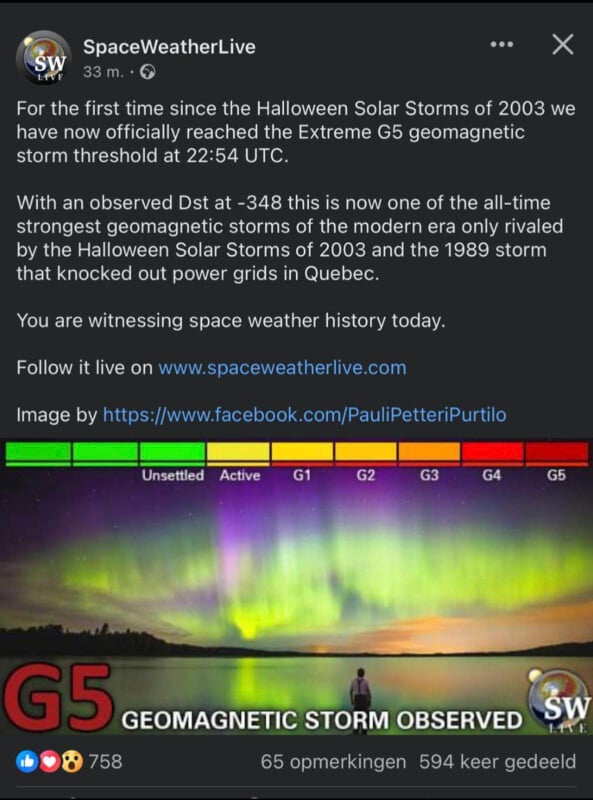
It even surpassed the original forecast and went above KP9 (highest ever) with a G5 geomagnetic storm. This was absolutely crazy.
I was now getting extremely hyped and when it was getting dark I quickly drove out to find a spot with windmills to shoot from and already prepared several options. I first drove to the famous white windmill “de Vlinder” (literally translated: The Butterfly) where I also captured Neowise a few years ago.
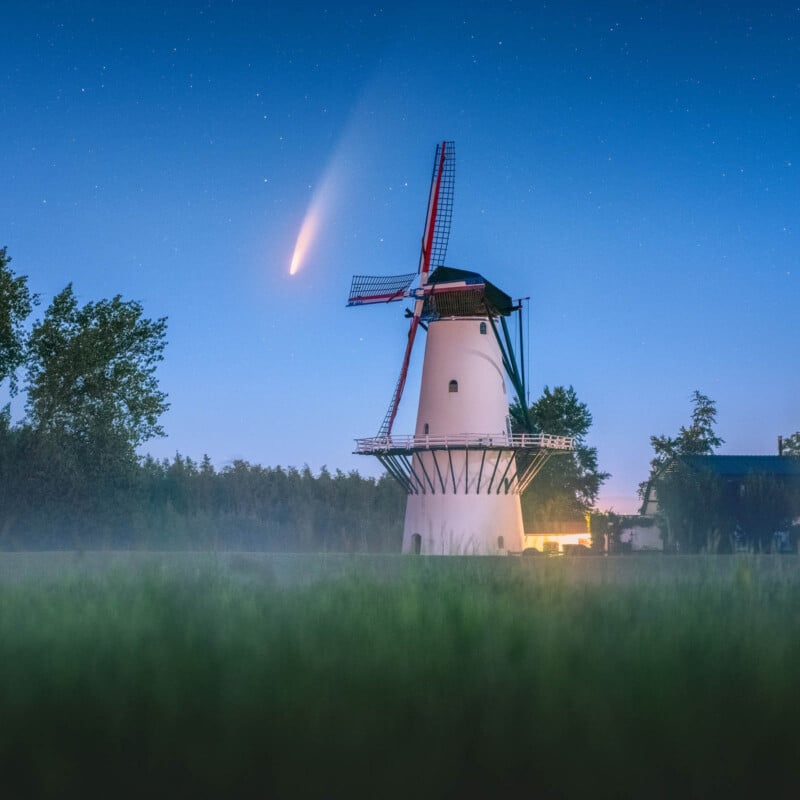
I didn’t like the orientation of the windmill. Yes, that’s a thing. Windmills rotate towards the wind and this one was rotated in a way not to my liking. So I drove to another one nearby, but the aurora orientation was off here and I couldn’t find a position. I was with two friends, Ronald and Klaas, discussing which ones to go next. The location we ended up in was about 15 minutes away in a little village Hei- en Boicop. It’s a location we have shot before, with two windmills: a little baby and a big one. And we knew that with a bit of luck, we could get both in the frame with the aurora.
Planning and options for these kinds of shoots are the most important part of success. We were on time at the windmills, we set up our gear, and we simply waited. At first, there was just a big green glow in the sky. This was already spectacular as I had not seen such a strong green glow in the Netherlands. But the strong pinks were not there yet. We were just waiting and chatting when suddenly the spikes appeared in the sky and within no time the whole sky was full of moving aurora curtains.

I have been to Iceland, Norway, and Greenland many times and have seen so many auroras in my life. But I would never think I would be able to see something like this in my own homeland, let alone above our beautiful windmills. I was absolutely in awe. I just kept shooting and enjoying the moment, and I later found that in the above photo, the spikes were the most intense. Not only in detail but also in color: pinks, blues, and greens. A rainbow of colors.
Some technical info about the photo:
Taken with a Sony a7R V camera with Sony 14mm f/1.8 GM lens. This lens is built for night photography with its fast aperture. The settings of this shot were shooting at f/1.8 with just a 1-second exposure at ISO 1600. Why the 1 second exposure only? To capture as much detail in the pillars as possible. If the aurora is moving, you want to use a shorter shutter speed to capture details. If you lose a long shutter speed, the aurora will be washed out. This is no problem when it’s not much, but in this case, a fast shutter speed was required for an optimal result.
I took some different shots with slightly different compositions in the same spot as well:
![]()
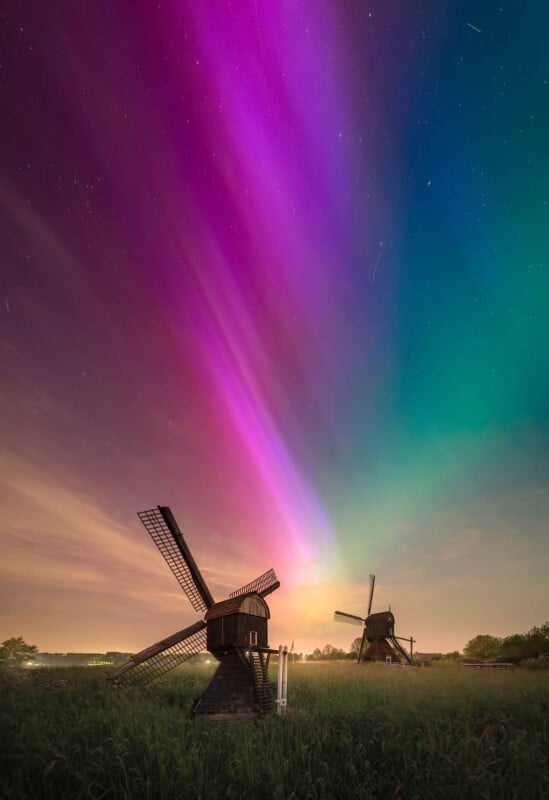
Sometimes the aurora got so strong that I would see a complete overhead aurora. You can see a real-time video of this on my Instagram.
This is something you can normally only see within the polar circles. It was one of the most beautiful moments in my photographic career and absolutely unreal. Even when writing this, I still have a hard time believing I experienced this.
And I was not the only one. The internet was flooded with aurora photos that night and the following morning from all over Europe and the US. I had never seen something like this in my life and it was great to see so many people were able to enjoy the aurora that night. In the end, it was even seen from some parts of Africa!
Since posting the original photo with the two windmills on Saturday, lots of people around the world saw the iconic Dutch windmills with the aurora above. On Twitter it already has a crazy 100,000 likes and over 4.5 million views on my own profile alone, which are statistics I didn’t even come close to before. Not to mention the thousands of reposts everywhere.
What happened last night is something that I thought was only a dream. The strongest aurora ever, above the Dutch windmills. I still can't believe this was real. Captured after midnight in The Netherlands. pic.twitter.com/eXyyRe3JW8
— Albert Dros (@albertdrosphoto) May 11, 2024
I will remember this night forever and I have no idea if I will ever see something like this again in my lifetime. At least we have the photos to remember it for! And the photostory, to make this a timeless moment. Because that’s what photography is about: creating timeless memories.
About the author: Albert Dros is an award-winning Dutch photographer. The opinions expressed in this article are solely those of the author. His work has been published by some of the world’s biggest media channels, including TIME, The Huffington Post, The Daily Mail, and National Geographic. You can find more of his work on his website, or by following him on Facebook and Instagram. This article was also published here.